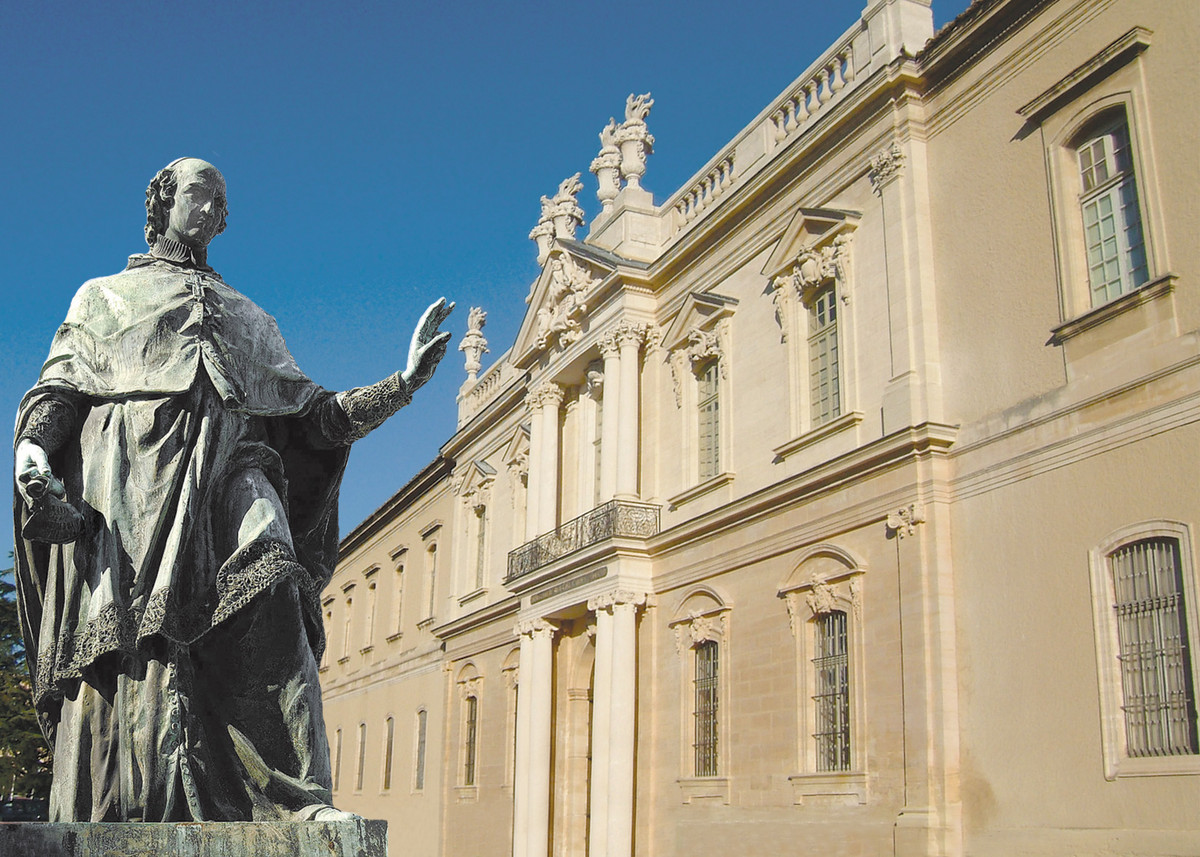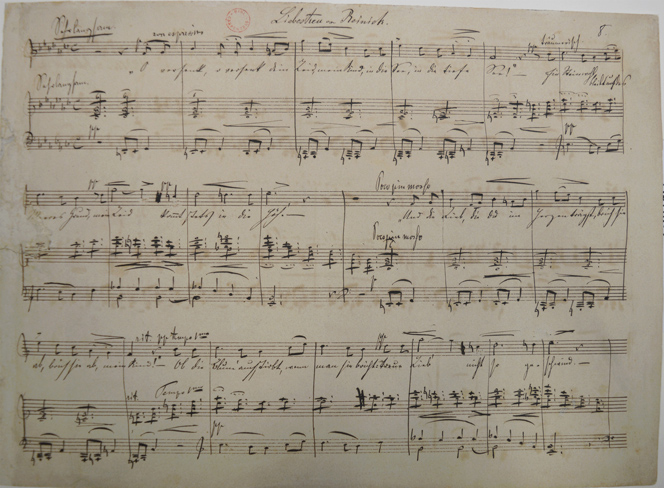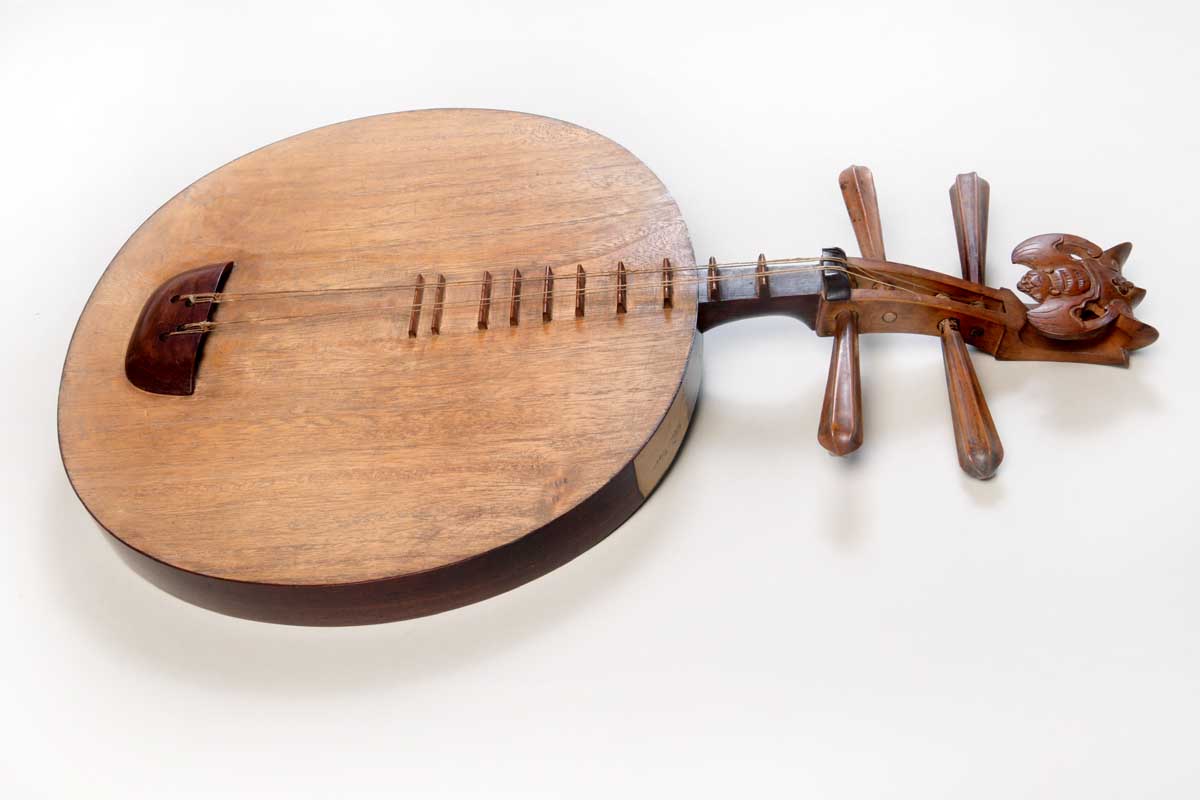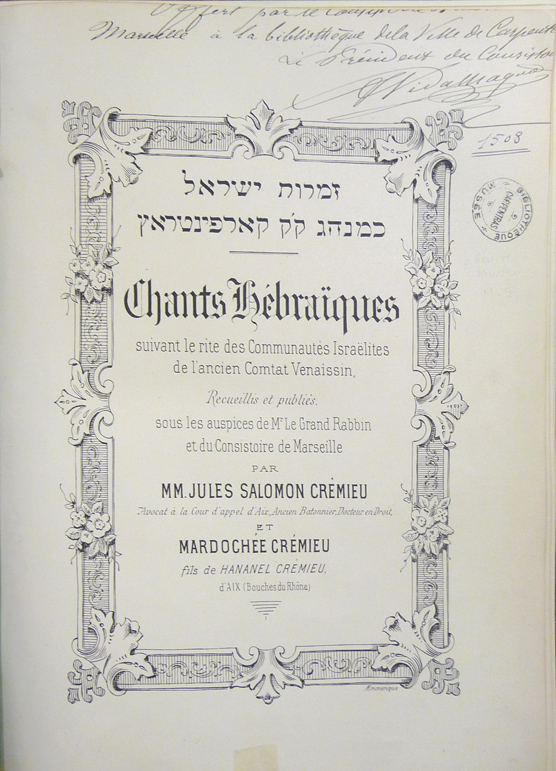Musical collections
Of the many and varied collections housed at the Inguimbertine, its musical corpus holds special significance. Music has long been a key aspect of the identity of Carpentras.
Elzéar Genêt (1475-1548), nicknamed il Carpentrasso or simply ‘Carpentras’ himself, was chapelmaster under Popes Julius II and Leo X before he went on to teach Palestrina. But the musical traditions of Carpentras go well beyond religious pieces. Father Ménestrier, a music historian, showed that Akébar, roi du Mogol (‘Akbar, King of the Mughals’), an opera by Abbot Mailly, who was secretary to Bishop of Carpentras Cardinal Alessandro Bichi (1596-1657), was performed for the first time in the Episcopal Palace of Carpentras as early as 1646, i.e., twelve years before the operas by Perrin and Cambert were performed in Paris. In the 18th century, the capital of the Comtat Venaissin was also home to a remarkable music academy, the heritage of which is still being rediscovered at the Inguimbertine.
From the outset, the Inguimbertine preserved its musical corpus: from gospels and fragments of pieces written in neumes from the 9th to 12th centuries, to the many manuscripts and printed prayer books with plainchant notation from the 14th to 16th centuries.
In 1858, the bequest of Casimir Barjavel, a doctor from Carpentras and historian specialised in the Comtat Venaissin, supplemented this first musical corpus with a significant number of ancient and modern editions of pieces composed by locals.
Twenty years later, a major donation from another Carpentras native, Jean-Joseph Bonaventure Laurens, resulted in the Inguimbertine becoming one of the biggest public repositories for musical documents. Bonaventure Laurens (1801-1890) was an accountant at the Montpellier medical school, but he was also a musician first and foremost. He had been friends with Mendelssohn, Rinck, Schumann, Brahms, Chopin, Heller, Gounod, and Paladilhe. Castil-Blaze in particular was very fond of him.
Finally, this written and graphical heritage is complemented by a large collection of around fifty musical instruments from Europe, Africa and the Far East. These instruments were donated in 1887 by the mother of Captain Vigne, an officer from Carpentras who had lived in Cochin-China, Madagascar and Africa. To make sure that the public is aware of how tightly linked the library and museum are, musical instruments and documents are on display at the Hôtel-Dieu right at the entrance to the multimedia library.
Catalogues :
Ancient music collection of Carpentras
Inguimbertine library (a French-language catalogue of manuscripts and printed musical documents), Arcade Agence des arts du spectacle Provence-Alpes-Côte d'Azur, 2012
This catalogue has very detailed entries but is not exhaustive.
We therefore advise you to also consult : and .






